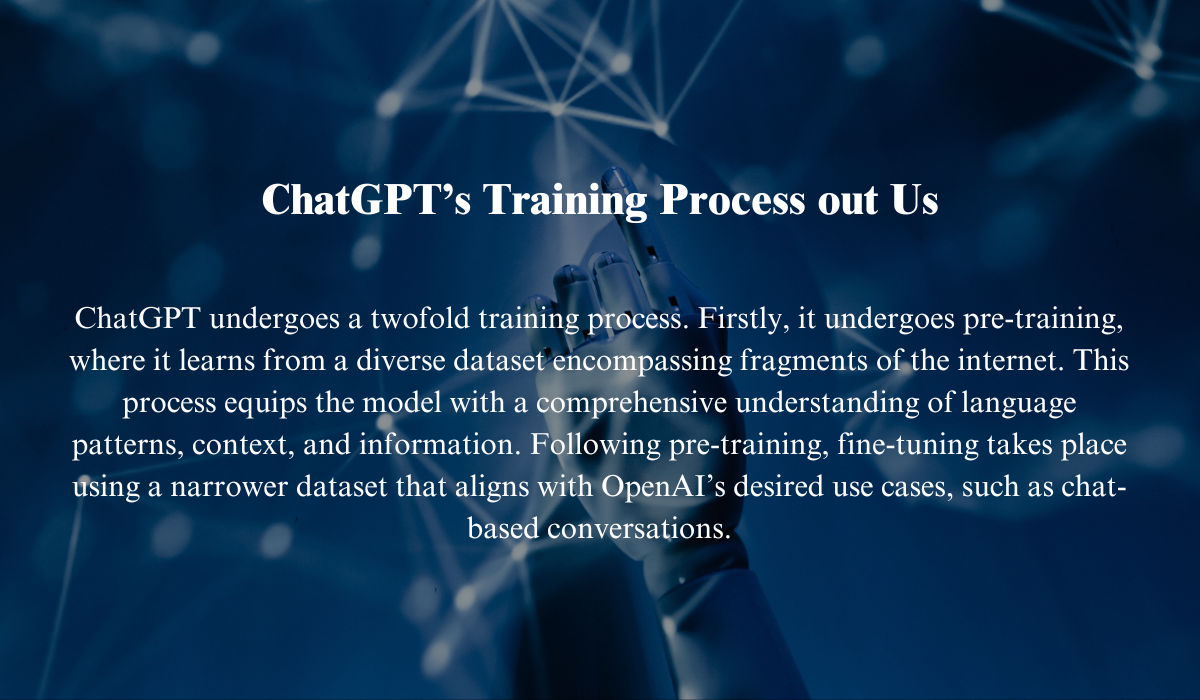The Evolution of ChatGPT: A Deep Dive into OpenAI’s Language Model (How ChatGPT is Evolving in OpenAI)
Introduction
In the world of artificial intelligence, OpenAI’s ChatGPT has made remarkable strides in natural language processing. This advanced language model, based on the GPT-3.5 architecture, has redefined the capabilities of conversational AI. In this article, we will explore the intricacies of ChatGPT, delving into its development, applications, strengths, and potential implications for the future.
The Genesis of ChatGPT
ChatGPT is the latest advancement in OpenAI’s lineage of Generative Pre-trained Transformers (GPT). It all began with GPT, followed by GPT-2, with each iteration pushing the boundaries of language understanding and generation. GPT-3, the predecessor to ChatGPT, caused a stir with its monumental 175 billion parameters, making it one of the largest language models ever created.
Understanding the GPT Architecture
The secret to ChatGPT’s excellence lies in its underlying architecture. GPT models are built on a transformer architecture, enabling them to comprehend and generate human-like text by assimilating vast amounts of diverse data. The transformer’s attention mechanism empowers the model to grasp contextual information, making it exceptionally skilled at understanding and generating coherent text.
ChatGPT’s Training Process
ChatGPT undergoes a twofold training process. Firstly, it undergoes pre-training, where it learns from a diverse dataset encompassing fragments of the internet. This process equips the model with a comprehensive understanding of language patterns, context, and information. Following pre-training, fine-tuning takes place using a narrower dataset that aligns with OpenAI’s desired use cases, such as chat-based conversations.

How ChatPT is Evolving in OpenAI
Applications of ChatGPT
a. Conversational AI (How ChatGPT is Evolving in OpenAI)
ChatGPT excels in the realm of conversational AI. It can engage in open-domain conversations, respond to queries, provide information, and generate contextually relevant replies. Businesses have integrated ChatGPT to enhance customer support and streamline communication.
b. Content Generation
The model’s content creation abilities are exceptional, enabling it to produce articles, stories, and various other written pieces. Content creators leverage ChatGPT to generate ideas, overcome writer’s block, or even draft initial versions of articles.
c. Programming Assistance
ChatGPT demonstrates remarkable prowess in assisting with coding tasks. Developers utilize it to receive code-related suggestions, debug, and explore solutions to programming challenges.
d. Language Translation
Although not solely designed for translation, ChatGPT’s aptitude for understanding language allows it to provide contextually accurate translations in certain scenarios.
Strengths of ChatGPT
a. Versatility
ChatGPT stands out due to its remarkable versatility. It can adapt to a wide range of tasks without requiring task-specific training. This adaptability makes it a valuable tool for various applications.
b. Contextual Understanding
The model excels in comprehending the context within a conversation, generating responses that are both coherent and contextually relevant. This represents a significant leap forward in the field of natural language processing. How ChatGPT is Evolving in OpenAI.
c. Large Scale
Boasting an impressive 175 billion parameters, ChatGPT ranks among the largest language models. This vast scale enables the model to capture intricate details and nuances of language. How ChatPT is Evolving in OpenAI.
d. Continual Learning
Thanks to the pre-training and fine-tuning processes, ChatGPT possesses the ability to continually learn and adapt. This adaptability is crucial for remaining relevant in dynamic conversational scenarios. How ChatGPT is Evolving in OpenAI.
Concerns and Mitigations
a. Bias and Ethical Considerations
The use of large language models like ChatGPT raises concerns about potential biases in the training data. OpenAI acknowledges this challenge and is actively working to reduce both glaring and subtle biases. Regular audits and community feedback contribute to ongoing improvements.
b. Potential for Misuse
The immense power of ChatGPT can be exploited to generate misleading information or malicious content. To address this, OpenAI has implemented usage policies, monitors system outputs, and actively seeks user feedback to uncover and rectify potential issues.
The Future of ChatGPT
OpenAI’s commitment to advancing AI technology ensures that ChatGPT will continue to evolve. Ongoing research, user feedback, and model refinements will likely result in more robust and capable iterations. OpenAI is also exploring ways to allow users to define the AI’s values within broad bounds, striking a balance between customization and ethical considerations.
User Interactions and Feedback
OpenAI values user feedback to improve ChatGPT’s limitations. The ChatGPT interface provides users with the opportunity to interact with the model and offer feedback regarding problematic outputs. This iterative feedback loop greatly contributes to the model’s ongoing development. How ChatGPT is Evolving in OpenAI.
Conclusion
ChatGPT represents a significant milestone in conversational AI, showcasing tremendous progress in the field of natural language processing. Its versatility, contextual understanding, and large-scale architecture make it a valuable asset across various domains. While challenges such as bias and potential misuse exist, OpenAI’s commitment to addressing these issues and incorporating user feedback ensures a responsible and ethical approach to AI development. As ChatGPT continues to evolve, its impact on communication, content creation, and problem-solving is set to grow, shaping the future landscape of artificial intelligence. How ChatGPT is Evolving in OpenAI.



